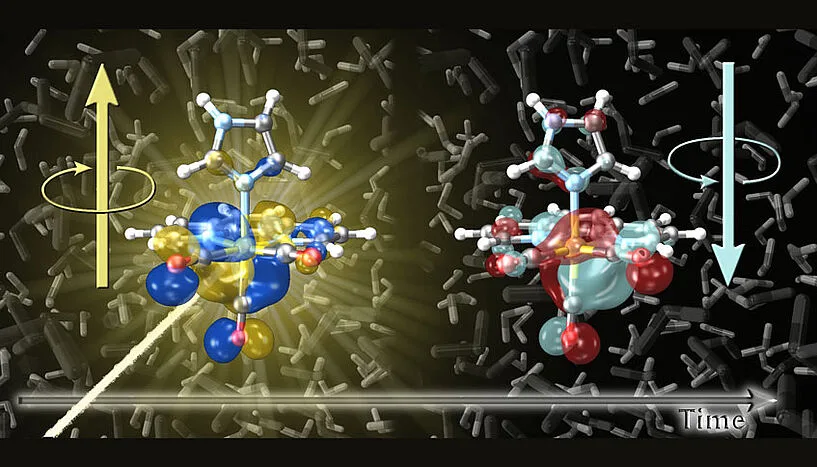
Researchers at TU Dortmund University have achieved a breakthrough by creating a remarkably resilient time crystal. It exceeds the temporal stability observed in previous trials by millions of times.
This accomplishment not only validates a captivating phenomenon proposed by Nobel Prize laureate Frank Wilczek approximately a decade ago but also echoes themes that have fascinated science fiction enthusiasts.
The intriguing findings have been officially documented in the prestigious journal Nature Physics.
What is a Time Crystal?
Let’s start with crystal first. Regular crystals like diamonds and quartz, have atoms that are ordered in a repeated pattern. This implies that atomic structure (of crystals) repeats itself in space. Now here lies the difference – time crystals have atomic structure that do not repeat itself in space but in time!
Frank Wilczek, the physicist from MIT and a Nobel Prize winner, had this mind-blowing idea back in 2012. He suggested that just like we have crystals in space, there could also be crystals in time.
His proposition is based on the idea of physics, which suggests space and time often coexist seamlessly, as illustrated by principles like those in special relativity. Therefore, he posited that, analogous to spatial crystals, temporal crystals must also exist. It’s like adding a whole new layer to how we understand the flow of time!
According to Wilczek, in order for temporal crystallinity to come into existence, a specific physical characteristic must undergo spontaneous and periodic changes over time. All on its own, without any outside forces nudging it. It’s like time having it own set of rules!

Time Crystals’ Dance in a Bose-Einstein Condensate
Scientists have been buzzing with excitement and debating the plausibility of time crystals for years. Interestingly, the idea has made an appearance in the realm of cinema. Remember that time crystal stealing the show in Marvel’s “Avengers: Endgame” (2019)?
However, the real-world scientific progress has been noteworthy since 2017 when researchers managed to showcase potential time crystal behavior in a few instances. But, these experiments deviated from Wilczek’s initial concept.
Instead of responding in the expected period or rhythm, the systems reacted with another period that was twice as long.
It wasn’t until 2022 that scientists successfully demonstrated a crystal behaving periodically in time, despite being subjected to a time-independent, constant excitation. This milestone was achieved within a Bose-Einstein condensate, yet, the crystal’s existence was fleeting, lasting only a few milliseconds.
Team Unleashes Time Crystal Power from Engineered Crystal
Dr. Alex Greilich and his team in Dortmund have recently crafted a unique crystal using indium gallium arsenide. In this innovative design, the nuclear spins within the crystal serve as a reservoir for the formation of a time crystal. The term “nuclear spins” refers to the intrinsic angular momentum associated with atomic nuclei.
The crystal is intentionally structured so that these nuclear spins act as a reservoir. The purpose of this reservoir is to facilitate the creation of a time crystal. To form a spontaneous symmetry breaking in time, a continuous illumination process is applied.
As the crystal is bathed in light, the nuclear spins within act as the key players. Through interactions with the spins of electrons within the crystal, a phenomenon known as nuclear spin polarization occurs. This polarization, in turn, spontaneously generates oscillations, effectively creating a time crystal within the structure.
The approach demonstrates an interesting way of harnessing quantum properties for creating and manipulating these intriguing states of matter.
Astonishing 40-Minute Lifespan Defies Expectations
As of the latest update on the experiments, the crystal has exhibited an impressive lifespan of at least 40 minutes. And it’s a whopping ten million times longer than any other time crystal we’ve seen so far.
Additionally, the researchers envision exciting potential for the crystal’s longevity to extend even further. Thus, opening up new possibilities for groundbreaking advancements in the study of time crystals.

Takeaway
The successful exploration and manipulation of time crystals have the potential to lead to several intriguing future implications. Some of them are as follows:
- Quantum Computing: Their unique properties could be harnessed to create more stable and error-resistant quantum bits (qubits). This will assist in the advancement of quantum computing technologies.
- Enhanced Precision Instruments: The exact and rhythmic tendencies of time crystals may be harnessed for the development of highly precise timekeeping instruments and sensors. This could have applications in fields such as navigation, communication, and scientific research.
- New Materials and Technologies: It would help in developing novel materials with unique properties.
- Fundamental Physics Insights: Studying time crystals provides insights into the fundamental nature of time and matter.
- Information Storage: Their stable and periodic nature could be exploited for developing advanced methods of encoding and retrieving information in quantum systems.
It’s super important to highlight that even though these future possibilities are exciting, we’re just scratching the surface in exploring what time crystals can really do. We need lots more research and experiments to uncover all the awesome applications they might have. But just a mere thought about the time crystal revolution sparks a sense of awe and wonder. It’s like envisioning a whole new dimension in our understanding of time and matter.



